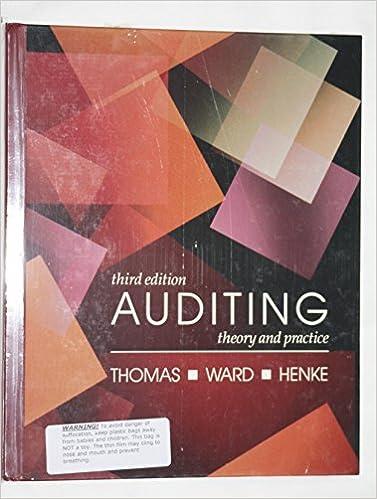
Listed below are selected examples of transactions related to the purchase and sale of inventory from the perspective of the seller on the buyer as indicated. Assume a perpetual inventory system is in use. 1. Buyer: Purchase of $3,080 of inventory for cash. 2. Buyer: Return of $660 of inventory to seller for credit on account. 3. Buyer: Purchase of $3,520 of inventory on account, terms 2/10,n/45. 4. Buyer: Payment of $360 cash for freight on purchase of inventory (FOB shipping point). 5. Buyer: Payment of amount owed for purchase of $3,080 of inventory, terms 2/10,n/30, paid within discount period. 6. Seller: Sale of inventory on account, terms n/30. Selling price $10,000; cost $4,000. Management expects a return rate of 7.69%. 7. Seller: Return of damaged inventory from buyer for cash. Selling price $480; cost $196. All of the goods were discarded because they are not resaleable. 8. Seller: Payment of $520 cash for freight on sale of inventory (FOB destination). 9. Seller: Return of unwanted inventory from buyer for credit on account. Selling price $360; cost $140. Goods restored to inventory for future resale. 10. Seller: Receipt of payment ($7,040) from customer on account, terms n/30. For each of the above transactions, indicate (a) the basic type (asset, liability, revenue, or expense) of each account to be debited and credited; (b) the specific name(s) of the account(s) to debit and credit (for example, Inventory); and (c) whether each account is increased (+) or decreased (-) and by what amount. The first one has been done for you as an example. (Enter specific debited account items in alphabetical order. Enter negative amounts using either a negative sign preceding the number e.g. 45 or parentheses e.g. (45).) Listed below are selected examples of transactions related to the purchase and sale of inventory from the perspective of the seller on the buyer as indicated. Assume a perpetual inventory system is in use. 1. Buyer: Purchase of $3,080 of inventory for cash. 2. Buyer: Return of $660 of inventory to seller for credit on account. 3. Buyer: Purchase of $3,520 of inventory on account, terms 2/10,n/45. 4. Buyer: Payment of $360 cash for freight on purchase of inventory (FOB shipping point). 5. Buyer: Payment of amount owed for purchase of $3,080 of inventory, terms 2/10,n/30, paid within discount period. 6. Seller: Sale of inventory on account, terms n/30. Selling price $10,000; cost $4,000. Management expects a return rate of 7.69%. 7. Seller: Return of damaged inventory from buyer for cash. Selling price $480; cost $196. All of the goods were discarded because they are not resaleable. 8. Seller: Payment of $520 cash for freight on sale of inventory (FOB destination). 9. Seller: Return of unwanted inventory from buyer for credit on account. Selling price $360; cost $140. Goods restored to inventory for future resale. 10. Seller: Receipt of payment ($7,040) from customer on account, terms n/30. For each of the above transactions, indicate (a) the basic type (asset, liability, revenue, or expense) of each account to be debited and credited; (b) the specific name(s) of the account(s) to debit and credit (for example, Inventory); and (c) whether each account is increased (+) or decreased (-) and by what amount. The first one has been done for you as an example. (Enter specific debited account items in alphabetical order. Enter negative amounts using either a negative sign preceding the number e.g. 45 or parentheses e.g. (45).)







